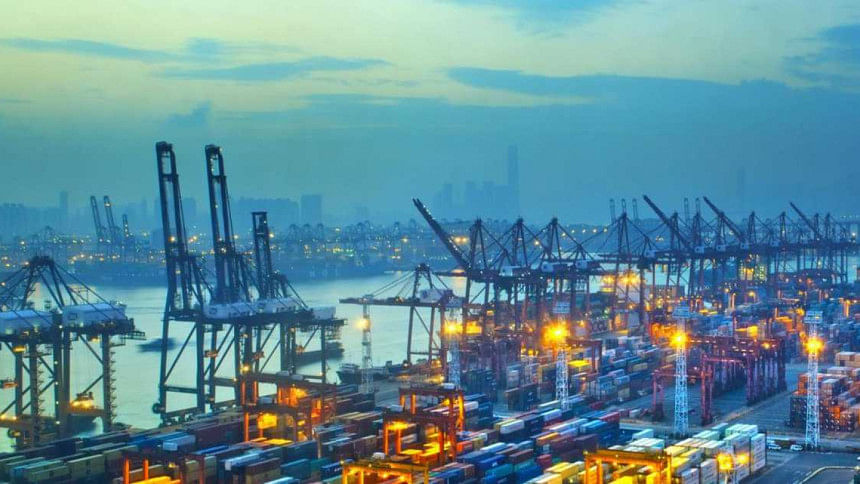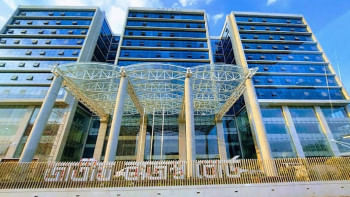How Bangladesh fits into it

Globalisation conceived and led by the western world has failed to deliver on most of its promises to the majority of the globe's inhabitants. Based largely on destabilisation, exploitation, militarisation and financial parasitism, it has resulted in death, destruction, chaos and economic and social inequality of unmatched proportions.
Veteran journalist Pepe Escobar sarcastically wrote that even the World Economic Forum during its last meeting, "suddenly discovered that globalisation as we know it fosters massive inequality, as much as globalisation's self-appointed managers remain inflexible about their moral right to bend whole nations to their will." The result: eight individuals on planet Earth today own as much wealth as the poorest 50 percent of the world combined, on account of the neo-liberal economic policies pursued by the western elites which they gladly shoved down the throats of everyone else.
Even the non-elites of the western world have not been spared. Countries like Greece and Cyprus for example, have been sucked dry, while most European governments are chuffed simply by the fact that their country's GDP is growing at all, albeit at embarrassingly low rates. This has understandably led the average westerner to detest western led globalisation. And the fact that they do has been made clear by Brexit, the election of Donald Trump, rise of political parties such as the UK Independence Party (UKIP) and Marine Le Pen's National Front, among many other indicators.
As the western world battles itself over which course of action to pursue next, a new form of globalisation, led by the likes of China, Russia and others is taking shape. Based on the concept of multi-polarity, development and mutual agreement the architecture for this new form of globalisation seemingly centres on China's One Belt, One Road (OBOR) initiative. But what is it about OBOR that is appealing to so many countries across Eurasia?
For starters, it is the largest infrastructure development project ever undertaken, involving about 65 countries, covering 60 percent of the world's population and a third of global economic output. According to The Guardian, "the Belt and Road initiative is an immensely ambitious development campaign through which China wants to boost trade and stimulate economic growth across Asia and beyond", by "building massive amounts of infrastructure connecting it to countries around the globe".
The global consultancy McKinsey says that "the plan has the potential to massively overshadow the US' post-war Marshall reconstruction plan," which basically helped rebuild Europe from rubble, after the devastation of the Second World War. Combining two main routes to form one circulatory system of trade, OBOR is just what Eurasia needs to rapidly move forward in improving both the economic livelihoods of its inhabitants, as well as promote peaceful co-existence amongst its diverse groups of people.
OBOR, however, is not the entire blueprint for this new globalisation. Russia has its Eurasian Economic Union which perfectly complements China's OBOR. And to reassure and bring India (which has been the most sceptical about OBOR because of Pakistan's involvement) into the fold, both India and Pakistan were only recently granted full membership into the Shanghai Cooperation Organisation.
Moreover, during the most recent St. Petersburg International Economic Forum, US journalist Megyn Kelly focused her questions to Prime Minister Narendra Modi on the rivalry between India and China and how that could act as a significant roadblock. PM Modi's answers were telling. He made clear that India and Russia have historically had good relations based on "trust" and as long as President Putin is involved, India is willing to cooperate in these projects.
Given all of this, Russian analyst Andrew Korybko writes "Altogether, the crisscrossing trade networks in the Indian Ocean and CPEC's [China Pakistan Economic Corridor] central location in enabling all of this adds credence to the argument that the world is moving towards an Indo-Pacific Century which will see South Asia become the focal point of global geopolitics and economic competition."
And here is where Bangladesh comes in. China has already promised to invest huge sums of money in Bangladesh. During President Xi's visit to Bangladesh last year, 27 deals worth USD 24.45 billion in soft loan to Bangladesh were signed between China and Bangladesh for various key development projects. On the sideline, 13 joint venture agreements involving USD 13.6 billion of Chinese investment was agreed upon by 13 Bangladeshi and 13 Chinese companies.
Bangladesh has also been one of the major recipients of funds from the Asian Infrastructure Investment Bank (AIIB), a key financier for OBOR projects. For example, it has been agreed that Bangladesh will receive USD 60 million to address its gas supply deficit from the AIIB. Also, back in June 2016, the AIIB had approved a loan worth USD 66 million for two power distribution projects to help improve transmission lines in the country.
Meanwhile, it is important to remember that Bangladesh is a member of The Bay Of Bengal Initiative for Multi-Sectoral Technical and Economic Cooperation (BIMSEC) and had attended the last BRICS summit in India with other member countries. There are now rumours of a BRICS Plus forming in future and BIMSTEC countries would naturally be the ideal candidates to join it, should it become a reality.
Thus, like the other South Asian countries, Bangladesh has been presented with a once in a lifetime opportunity for developing at a rapid pace and taking its destiny into its own hands. It is no wonder then, why every country is scrambling to hop-on-board the OBOR train, as combined with all the other projects in the pipeline, OBOR truly is the new architecture for a new, much more promising and peaceful form of Globalisation. Undoubtedly, it is an opportunity we should not let slip.
The writer is a member of the Editorial team at The Daily Star.

 For all latest news, follow The Daily Star's Google News channel.
For all latest news, follow The Daily Star's Google News channel. 



Comments